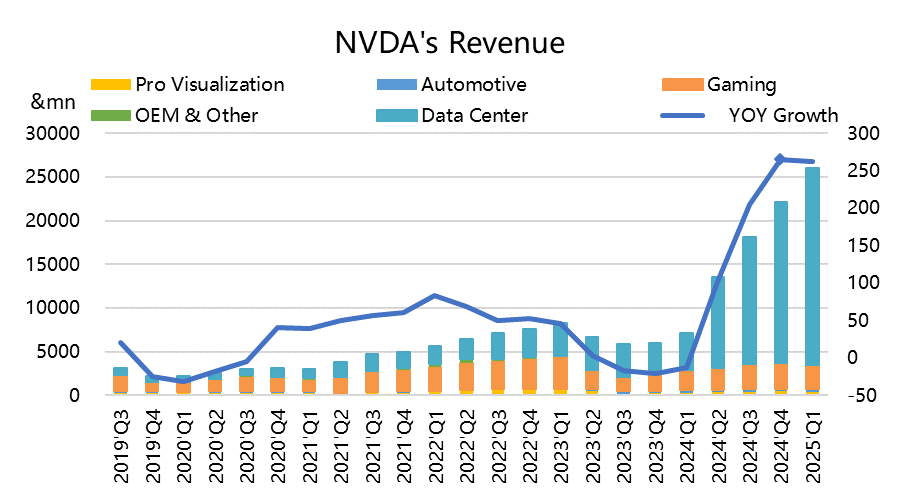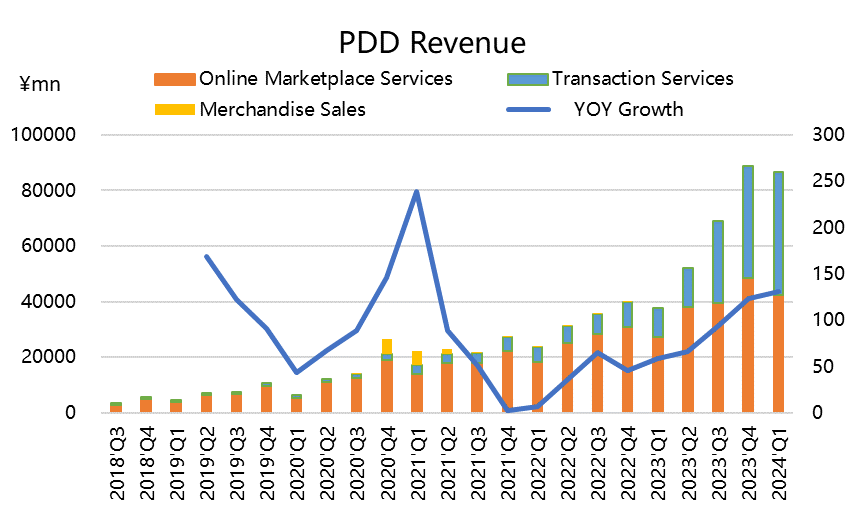Why Did Excellent Earnings Not Match Excellent Return?
$PDD Holdings Inc(PDD)$ 22nd pre-market earnings report , revenue +131% y/y, the highest growth rate in 21 years, 13% above the market consensus estimate, gross margin of 62%, 5% above the market estimate, net profit growth of +200%, 97% above the market consensus estimate.
But the stock opened higher and stayed below 150 that day, and the options were even more IV Crush, with almost all Calls and PUTs due that week discounted.

Pre-market gains are at the 6-7% level, which is also a far cry from the previous quarters' surges of around 20% at any given time, and even the 23rd still risks a pullback in intraday trading.
Of course, the fact that NVDA has the benefit of a stock split means that the $1,000 mark, which was originally considered a milestone by investors, could be the starting point for what becomes the next phase.
But this time around, with the market's expectations so high and the facts living up to the hype, option buyers could be the biggest losers, why?
Concerns about the transition from a "J-shaped" growth curve to an "S-shaped" one.
With the first phase of the High-Growth Phase behind us, the market is no longer sensitive to the "glitter" of earnings reports and lacks the urge to buy at all costs, as can be seen in the revenue growth curves of the two companies below. From the following two companies' revenue growth curves, you can see the point of change;
Stable-Growth Phase (Stable-Growth Phase), where profitability improves much more than revenue, is when shareholders begin to be more concerned about returns;
The market is now at new highs and profit-taking on the long side will creep in.
Investors holding higher IV CALL are in dire need of selling, especially with the large open orders stacked up at the $1,000 round figure for NVIDIA.
Institutions rebalance their positions in the overall U.S. equity market. Most institutions have caps on their positions in individual companies, and this is especially true of passive funds or Smart-Beta's. Even some of the more aggressive actively managed actives may stage additions and reductions to their positions.
Disclaimer: Investing carries risk. This is not financial advice. The above content should not be regarded as an offer, recommendation, or solicitation on acquiring or disposing of any financial products, any associated discussions, comments, or posts by author or other users should not be considered as such either. It is solely for general information purpose only, which does not consider your own investment objectives, financial situations or needs. TTM assumes no responsibility or warranty for the accuracy and completeness of the information, investors should do their own research and may seek professional advice before investing.



